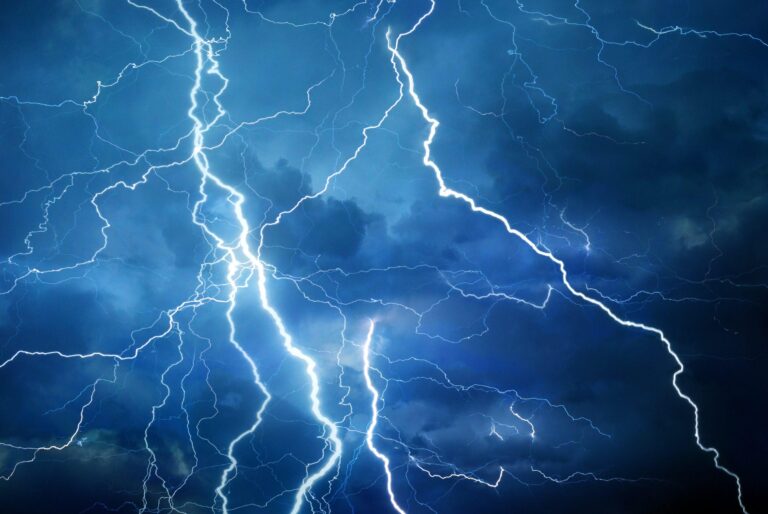France is grappling with the aftermath of a series of deadly thunderstorms and intense lightning strikes that have wreaked havoc across several regions. The severe weather event, tracked by meteorological agencies, has resulted in significant damage, casualties, and widespread disruptions. As emergency services respond to the unfolding crisis, authorities are urging residents to remain vigilant amid ongoing unstable atmospheric conditions. This developing story highlights the increasing frequency of extreme weather phenomena impacting France and raises pressing questions about preparedness and resilience.
France Faces Severe Damage as Thunderstorms and Lightning Trigger Widespread Disruptions
Violent thunderstorms, accompanied by intense lightning strikes, have wreaked havoc across multiple regions in France, leaving communities grappling with power outages and infrastructural damage. Emergency services report numerous fallen trees blocking roadways, shattered windows, and localized flooding disrupting daily activities. The most affected areas include the northeastern departments, where rainfall exceeded 100mm within hours, overwhelming drainage systems and causing flash floods. Residents have been urged to remain indoors as authorities assess the scale of destruction and prioritize restoration efforts.
Key impacts reported:
- Over 150,000 households experienced power cuts due to lightning-induced failures.
- Transportation networks faced delays and cancellations – especially rail services in the Grand Est region.
- Several schools and public facilities temporarily shut down due to safety concerns.
| Region | Rainfall (mm) | Power Outages | Flooded Areas |
|---|---|---|---|
| Grand Est | 120 | 65,000+ | Many urban neighborhoods |
| Hauts-de-France | 90 | 40,000+ | Rural lowlands |
| ĂŽle-de-France | 75 | 45,000+ | Metro stations and parks |
Experts Analyze Weather Patterns Behind Intense Storm Activity Across French Regions
Recent meteorological assessments indicate that a rare convergence of atmospheric conditions has fueled the destructive thunderstorms sweeping across multiple French regions. Experts highlight the role of a stagnant low-pressure system combined with anomalously warm and humid air masses originating from the Mediterranean, creating a volatile environment for intense convective storms. The interaction between these elements resulted in frequent lightning strikes, torrential rains, and localized flash flooding, exacerbating the overall impact of the weather events.
Climatologists also emphasize the influence of shifting jet stream patterns which have altered the usual storm trajectories, leading to prolonged exposure in affected areas. Detailed analysis reveals:
- High CAPE values (Convective Available Potential Energy) contributing to storm intensification
- Wind shear variations sustaining storm longevity and severity
- Moisture inflow from southern warm zones serving as the storm’s fuel source
These factors combined have created an unprecedented setup, making it one of the most intense thunderstorm episodes recorded in recent years.
| Region | Storm Duration (hours) | Lightning Strikes (per hour) | Rainfall (mm) |
|---|---|---|---|
| Provence-Alpes-CĂ´te d’Azur | 5 | 120 | 85 |
| Occitanie | 6 | 135 | 95 |
| Auvergne-RhĂ´ne-Alpes | 4 | 110 | 70 |
Safety Measures Urged for Residents as Authorities Prepare for Escalating Severe Weather Risks
With severe thunderstorms and frequent lightning strikes causing widespread damage across France, local authorities are intensifying efforts to safeguard residents against escalating weather threats. Emergency services have issued urgent advisories, emphasizing the need for vigilance and preparedness as meteorologists predict continued unstable conditions in the coming days. Citizens are strongly encouraged to follow official updates and avoid outdoor activities during peak storm hours to reduce the risk of injury or accidents.
Key safety precautions include:
- Securing loose objects around homes and yards to prevent damage from strong winds
- Staying indoors and away from windows during thunderstorms
- Avoiding the use of electrical appliances or plumbing during lightning events
- Keeping emergency kits and flashlights readily accessible in case of power outages
- Monitoring local news and weather channels for real-time alerts and instructions
| Risk Level | Recommended Actions | Emergency Helpline |
|---|---|---|
| Moderate | Review safety plans; prepare emergency supplies | 112 |
| High | Limit travel; stay indoors; secure property | 112 |
| Severe | Follow evacuation orders; seek shelter immediately | 112 |
In Summary
As France continues to grapple with the aftermath of the deadly thunderstorms and lightning strikes, authorities remain vigilant in their efforts to assess the damage and provide aid to affected communities. Meteorologists warn that such extreme weather events may become more frequent, underscoring the need for improved forecasting and preparedness. The coming days will be critical as emergency services work to restore normalcy and keep residents informed amid ongoing storm threats.




